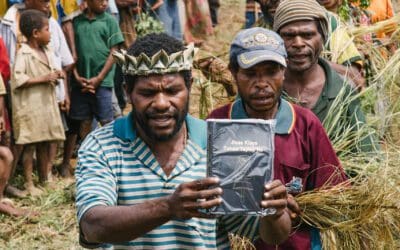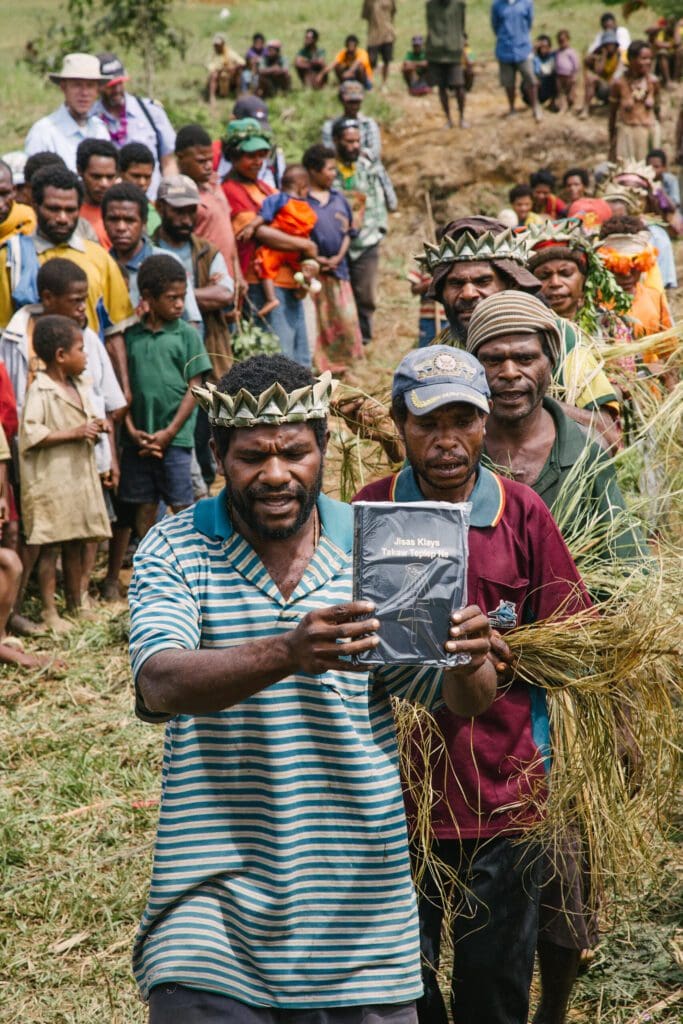“She gave birth to her first son, wrapped him in cloths, and laid him in a manger — there was no room for them to stay in the inn.” (Luke 2:7 GNT)
The Christmas story from Luke 2 seemed to be a reasonable place to begin translating God’s Word into the Apal language. The first step was for me to get an idea of the vocabulary the Apal people would use and to discover how they might go about actually telling the story.
I sought assistance from Lun, a young man who was literate in Tok Pisin, the trade language used throughout much of Papua New Guinea. I asked him to read the story in the Tok Pisin New Testament and then retell it to me in Apal.
The story Lun related turned out to be a combination of both Matthew’s and Luke’s accounts of Jesus’ birth. It also included a unique twist that resulted from his attempts to clarify the ambiguities of the Tok Pisin text as he retold it in Apal.
The Tok Pisin New Testament renders “wrapped in cloths” (“swaddled” in many English translations) as karamapim, which means “covered up.” This puzzled Lun. Why, he wondered, would a mother cover up her baby?
Papua New Guinean babies traditionally went naked in the tropical heat for the first several years of their lives. The idea of covering up baby Jesus for warmth would never have occurred to Lun. But he knew there must have been a reason, and he was determined to find out what it was.
Lun was puzzled. Why would Mary cover up her newborn baby?
His search for an answer to the troubling question took him to Matthew’s Gospel. There he found the explanation he sought. Thoughtfully he wrote it into the text of the story, desiring to spare other readers the confusion he had experienced.
What was his explanation? As you know, Matthew tells us that Herod was looking for the child in order to kill him. So, Lun reasoned, his mother covered him with a big cloth. When the soldiers searched for the baby Jesus, they were not able to find him because the cloth so effectively concealed him.
Amusing? Yes, but an example of the misunderstandings and confusion that arise when people read the Bible in a language that is not their own, especially a trade language such as Tok Pisin. Though this particular misunderstanding will probably not lead any Apal Christians astray, other misinterpretations may not be so harmless.
The Apal translation of the Christmas story began, figuratively speaking, to “uncover” the baby Jesus for the people. Since that long-ago Christmas, increasing portions of God’s Word have become “uncovered” for them.1 They now have the opportunity to hear God speaking to them in their own language, the only one that clearly connects with their minds and hearts.
1 The Apal people now have the entire New Testament plus the books of Genesis and Exodus in their own language. In August 2023, these Scriptures were dedicated for the growth of God’s Kingdom among the Apal and in neighboring people groups.
Scripture taken from the Good News Translation in Today’s English Version, Second Edition. Copyright © 1992 by American Bible Society. Used by permission.











